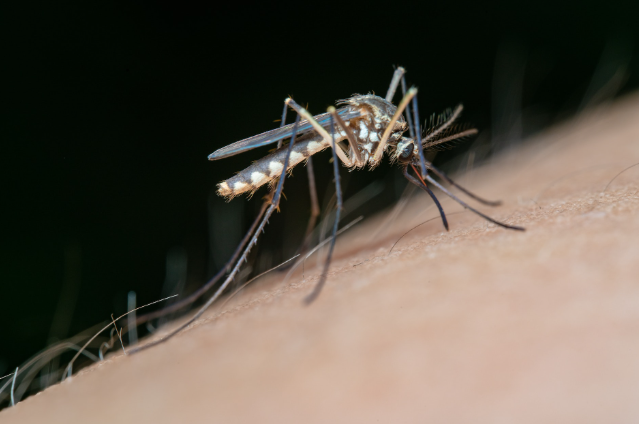
The disease-transmitting insects are called insect vectors and the disease is referred to as vector-borne disease. The insect vectors are the cause of many human diseases and, as a result, millions of deaths occur yearly, particularly in developing countries like South and Central America and Asia. Millions of dollars are spent each year on research and production of repellent compounds to prevent insect bites. Generally, vectors are the intermediate Hosts of pathogens and hosts. Vectors are chiefly responsible for biological transmission. It means the pathogens (Disease-causing organisms) undergo a part of their life cycle within the vectors and in festive forms are developed within them which they transmit to other hosts by injective the infective forms during their blood meal.
The insect vectors include mosquitoes, houseflies, sandflies, tsetse flies, deer flies, lice, black flies, rat fleas, water fleas, ticks, etc. There are 350 species of mosquitoes have been recorded in different parts of the world. Typically, the female mosquitoes are acts as carriers because the female can suck the blood and may transmit various diseases. The three different harmful mosquitoes are Anopheles, Culex, and Andes. These can be identified from the sitting position of the mosquito. The Anopheles mosquito forms an angle of 45 on the wall; the Culex mosquito is more or less parallel to the wall, and the Aedes mosquito sits more or less parallel to the wall. The Anopheles mosquito produces sound during flight and no sound is produced during flight Culex mosquito and Aedes produce less sound during flight. The pupa of the Anopheles mosquito is green, but the colorless pupa is found in the case of Culex and Aedes mosquitos.
The different mosquitos transmit different diseases as they act as vectors. The female Anopheles mosquito acts as a carrier for malaria-causing parasites. There are four malaria-causing parasites. These are Plasmodium vivax , Plasmodium, falciparum, Plasmodium malaria and Plasmodium oval. These four parasites cause malaria in the human body. People who have malaria usually feel very sieve with high fever and chills. Each year, approximately 210 million people are infected with malaria and about 4,40,000 people die from the disease. The Plasmodium falciparum malaria is potentially life-threatening. Patients with severe falciparum malaria may develop liver and kidney failure, convulsions, and coma. The Culex mosquito transmits the filial parasite Wuchereria bancrofti and causes Bancroftian filarial encephalitis. The Aedes mosquito transmits yellow fever, dengue, and chikungunya.
Recently, one of the most serious mosquito-borne diseases is Japanese Encephalitis. It is caused by the Japanese Encephalitis virus, which is transmitted by the Culex mosquito. The virus primarily infects namely pigs and water birds (herons, egrets, etc.). The virus does not live in humans for very long and is typically present in tiny quantities, so a feeding mosquito cannot pick up the virus from an infected person. The symptoms of infection of such a virus are mainly neurological problems like headache and inflammation of the brain tissue. Other symptoms include fever, seizures, neck stiffness, tremors, paralysis, and lack of coordination. This disease can cause permanent damage to the nervous system or death.
Besides mosquitos, other insects such as houseflies, sand fly, deer fly, louse, tsetse flies, etc. act as vectors and transmit many diseases through different parasites. The housefly can spread Amoebiasis and helminthiasis, and the sand fly spreads Kala–azar and tsetse fly causes sleeping sickness disease by transmitting Trypanosoma gambiense from an infected person to a normal man.
We have seen that most of the fatal diseases are caused by mosquitos. So we should control such vectors to prevent diseases.
The mosquito larva can be controlled by:
- Elimination of mosquito breeding places.
- Releasing small carnivorous fishes in the breeding places, particularly in drains, which feed mosquito larvae.
- Releasing sterile males in the wild.
- Spraying oils like kerosene, and diesel on the breeding place.
- Bacillus thuringiensis bacteria may also be used as larvicidal bacterium.
The adult mosquito is controlled by:
- Doors, windows, and ventilators may be covered by a net.
- Applying mosquito repellent cream on exposed parts of the body.
- Using mosquito net at night during sleep.
- Applying insect ideas such as DDT, BHC, etc.
